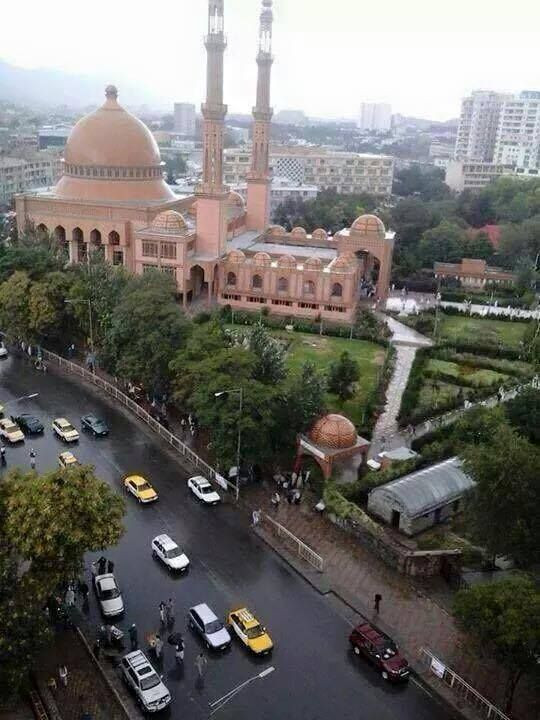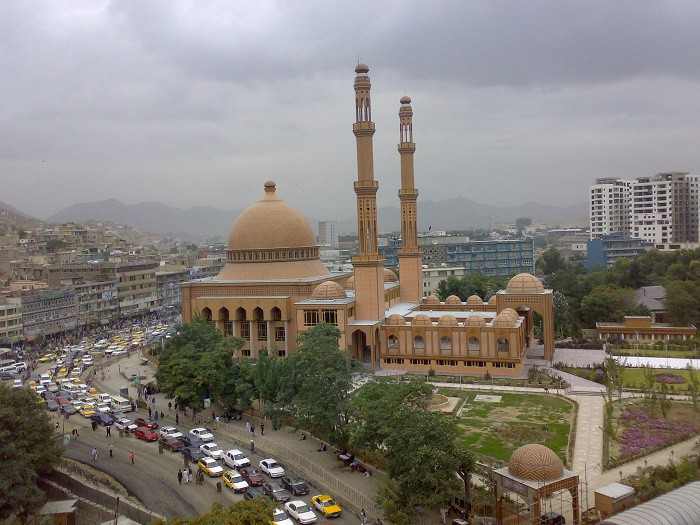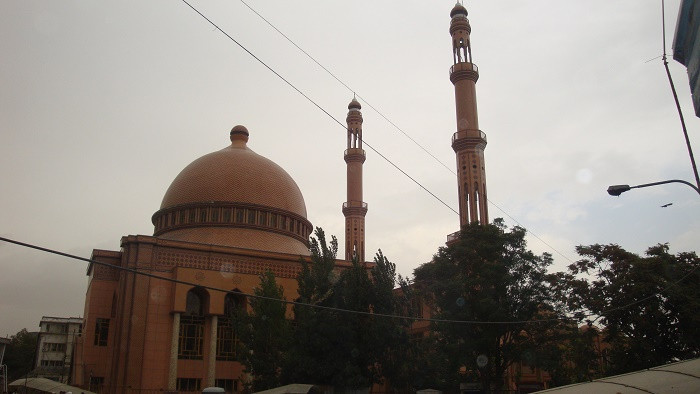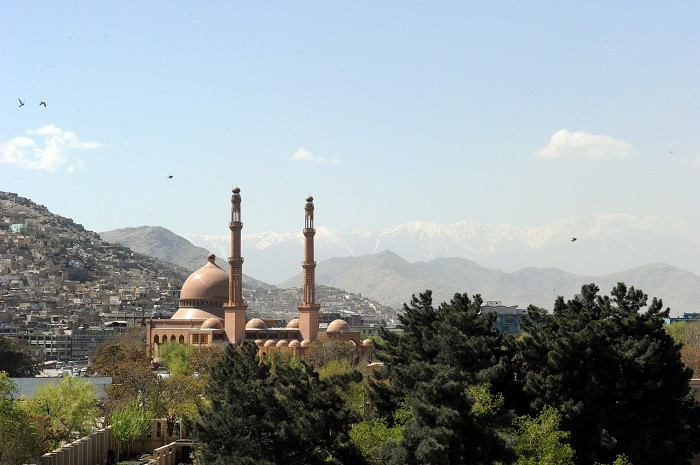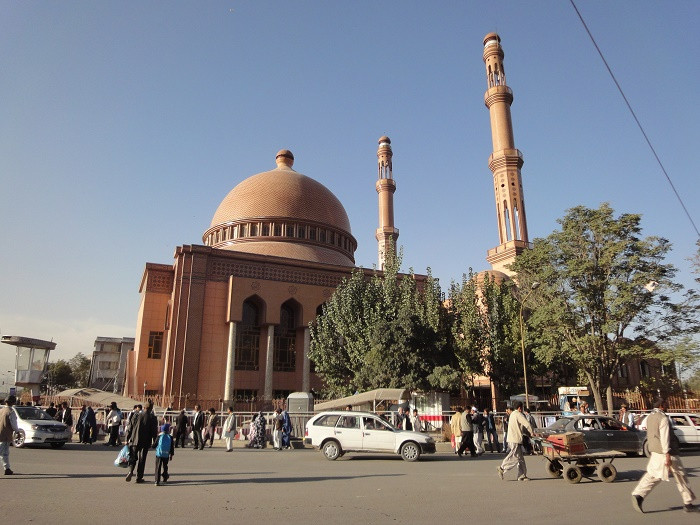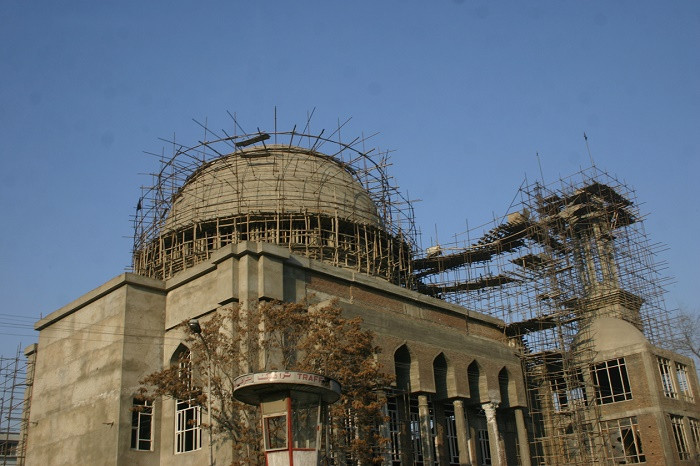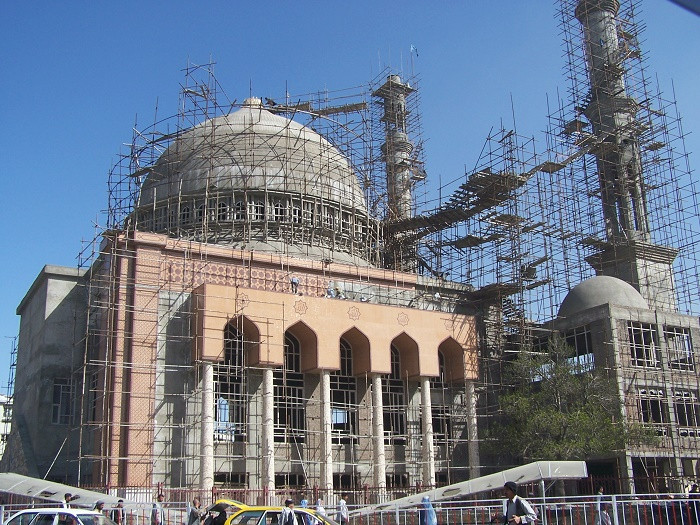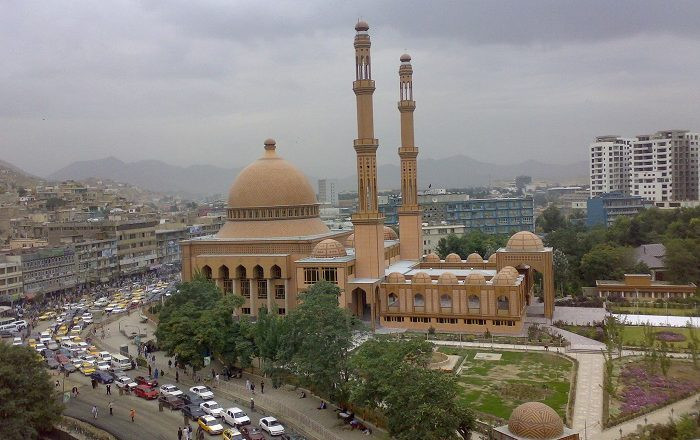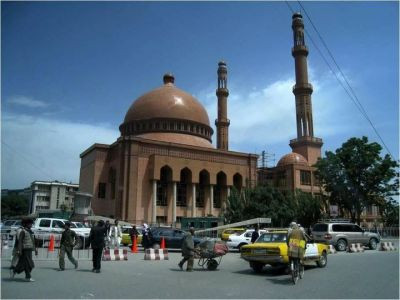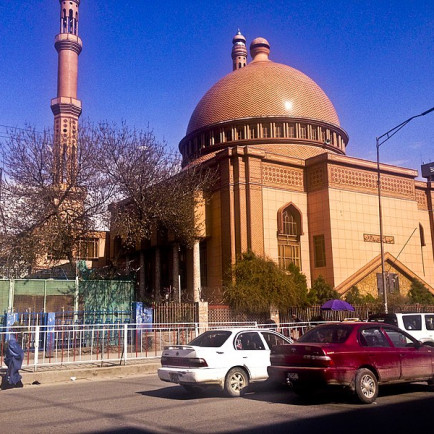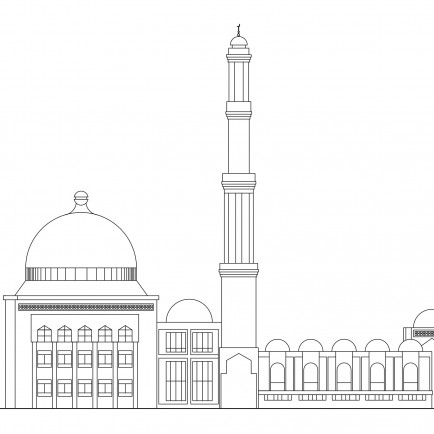Abdul Rahman Mosque
History
The mosque is named after an influential Afghan businessman named Hajji Abdul Rahman who has died but his sons continued the project. Construction of the mosque began in 2001 by Hajji Abdur Rahman but was delayed for several years due to red tape. The mosque has the capacity to serve 10,000 people at a time. There is also a madrasa inside the mosque and a library containing 150,000 books.
The major work on the mosque was completed in late 2009 but the official inauguration took place in July 2012 which was attended by the former Afghan President Hamid Karzai and many other high-ranking officials.The building of the mosque is said to have been initially designed by Afghan architect Mir Hafizullah Hashimi. Abdul Rahman Mosque is one of the most recently constructed mosques in Afghanistan. It was privately financed by a well-known and respected entrepreneur, Haji Abdul Rahman, after whom the mosque was subsequently named. It was his lifelong dream and last wish to build a mosque. He lived to see the works begin, but passed away in 2002. The mosque bearing his name was opened for religious services 10 years later, a couple of weeks before the month of Ramadan. Ghulam Farooq, a renowned and very talented Afghan engineer, worked on the design of the building.
Urban and Architectural
The mosque has three prayer halls on different floors,One floor of the building is dedicated to women only. a big learning center and an open terrace, and can serve up to 10,000 people at a time. The mosque features 20 domes, each having a hand-made brass chandelier with hundreds of light bulbs illuminating the rooms. The largest dome is above the main prayer hall. It is majestic and has a golden finish on the exterior, 44 arched windows around it, and Quran verses in elegant Islamic lettering decorating its interior. Abdul Rahman Mosque is a stunning work of art and a definite must-see.
The construction of this interesting religious structure began in 2001 and it was completed in 2009, where it has 14 different domes, 2 minarets . The Islamic architectural style is quite interesting as it has an amazing grand dome, while the main entrance is topped with another dome with big entrance door for the front courtyard.
At the center of the structure are the two high minarets who look like stacked and beautifully decorated
Description
The Abdul Rahman Mosque , also known as the Grand Mosque of Kabul, is one of the largest mosques in Afghanistan. It is located in one of Kabul's central commercial areas called Deh Afghanan, near the Pashtunistan Square, Zarnegar Park, and across the once popular Plaza Hotel. Even though the construction was delayed for some time, it was his sons who continued with the financing of the construction. The main architect responsible for this Islamic art piece is Hafizullah Hashimi, and as it is located near the Pashtunistan Square and across from the once popular Plaza Hotel, it is one of the major things to be seen in Kabul.
In addition, there is also the educational institution, the so-called madrasa, and there is also a library containing 150,000 books. All in all, this Sunni Islam place of worship is definitely something worth seeing in person, as it is the heavenly home for the majority of the Afghan Muslim population in Afghanistan’s capital city.
References
https://en.wikipedia.org/wiki/Abdul_Rahman_Mosque https://www.gpsmycity.com/attractions/abdul-rahman-mosque-54628.html http://www.alluringworld.com/abdul-rahman-mosque/
Details
Location
Kabul, Afghanistan, 34.520702°N 69.174686°E
Worshippers
10,000
Owners
Haji Abdul Rahman
Architect Name
Year of Build
2009
Area
1.4 hectares (3.5 acres)
Drawings
Map
History
The mosque is named after an influential Afghan businessman named Hajji Abdul Rahman who has died but his sons continued the project. Construction of the mosque began in 2001 by Hajji Abdur Rahman but was delayed for several years due to red tape. The mosque has the capacity to serve 10,000 people at a time. There is also a madrasa inside the mosque and a library containing 150,000 books.
The major work on the mosque was completed in late 2009 but the official inauguration took place in July 2012 which was attended by the former Afghan President Hamid Karzai and many other high-ranking officials.The building of the mosque is said to have been initially designed by Afghan architect Mir Hafizullah Hashimi. Abdul Rahman Mosque is one of the most recently constructed mosques in Afghanistan. It was privately financed by a well-known and respected entrepreneur, Haji Abdul Rahman, after whom the mosque was subsequently named. It was his lifelong dream and last wish to build a mosque. He lived to see the works begin, but passed away in 2002. The mosque bearing his name was opened for religious services 10 years later, a couple of weeks before the month of Ramadan. Ghulam Farooq, a renowned and very talented Afghan engineer, worked on the design of the building.
Urban and Architectural
The mosque has three prayer halls on different floors,One floor of the building is dedicated to women only. a big learning center and an open terrace, and can serve up to 10,000 people at a time. The mosque features 20 domes, each having a hand-made brass chandelier with hundreds of light bulbs illuminating the rooms. The largest dome is above the main prayer hall. It is majestic and has a golden finish on the exterior, 44 arched windows around it, and Quran verses in elegant Islamic lettering decorating its interior. Abdul Rahman Mosque is a stunning work of art and a definite must-see.
The construction of this interesting religious structure began in 2001 and it was completed in 2009, where it has 14 different domes, 2 minarets . The Islamic architectural style is quite interesting as it has an amazing grand dome, while the main entrance is topped with another dome with big entrance door for the front courtyard.
At the center of the structure are the two high minarets who look like stacked and beautifully decorated
Description
The Abdul Rahman Mosque , also known as the Grand Mosque of Kabul, is one of the largest mosques in Afghanistan. It is located in one of Kabul's central commercial areas called Deh Afghanan, near the Pashtunistan Square, Zarnegar Park, and across the once popular Plaza Hotel. Even though the construction was delayed for some time, it was his sons who continued with the financing of the construction. The main architect responsible for this Islamic art piece is Hafizullah Hashimi, and as it is located near the Pashtunistan Square and across from the once popular Plaza Hotel, it is one of the major things to be seen in Kabul.
In addition, there is also the educational institution, the so-called madrasa, and there is also a library containing 150,000 books. All in all, this Sunni Islam place of worship is definitely something worth seeing in person, as it is the heavenly home for the majority of the Afghan Muslim population in Afghanistan’s capital city.



